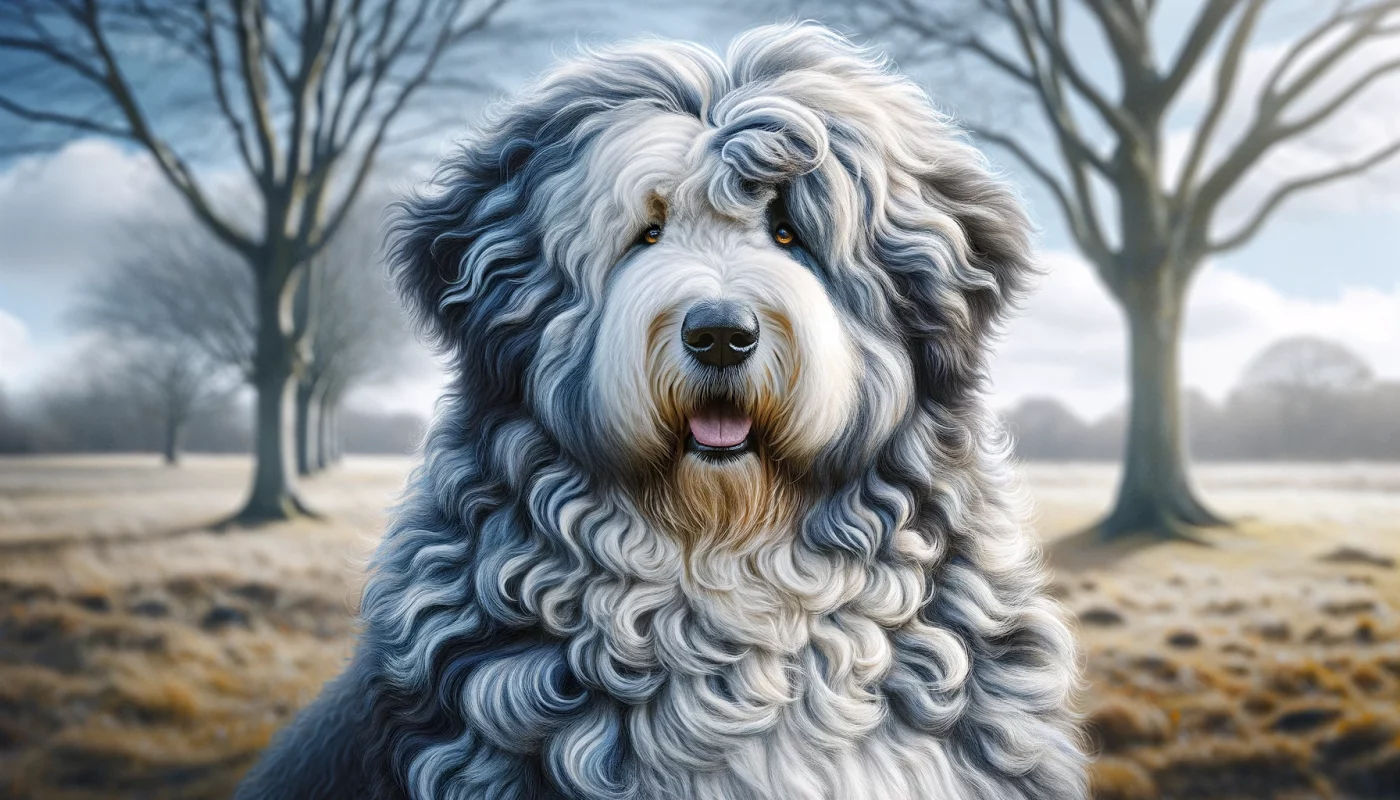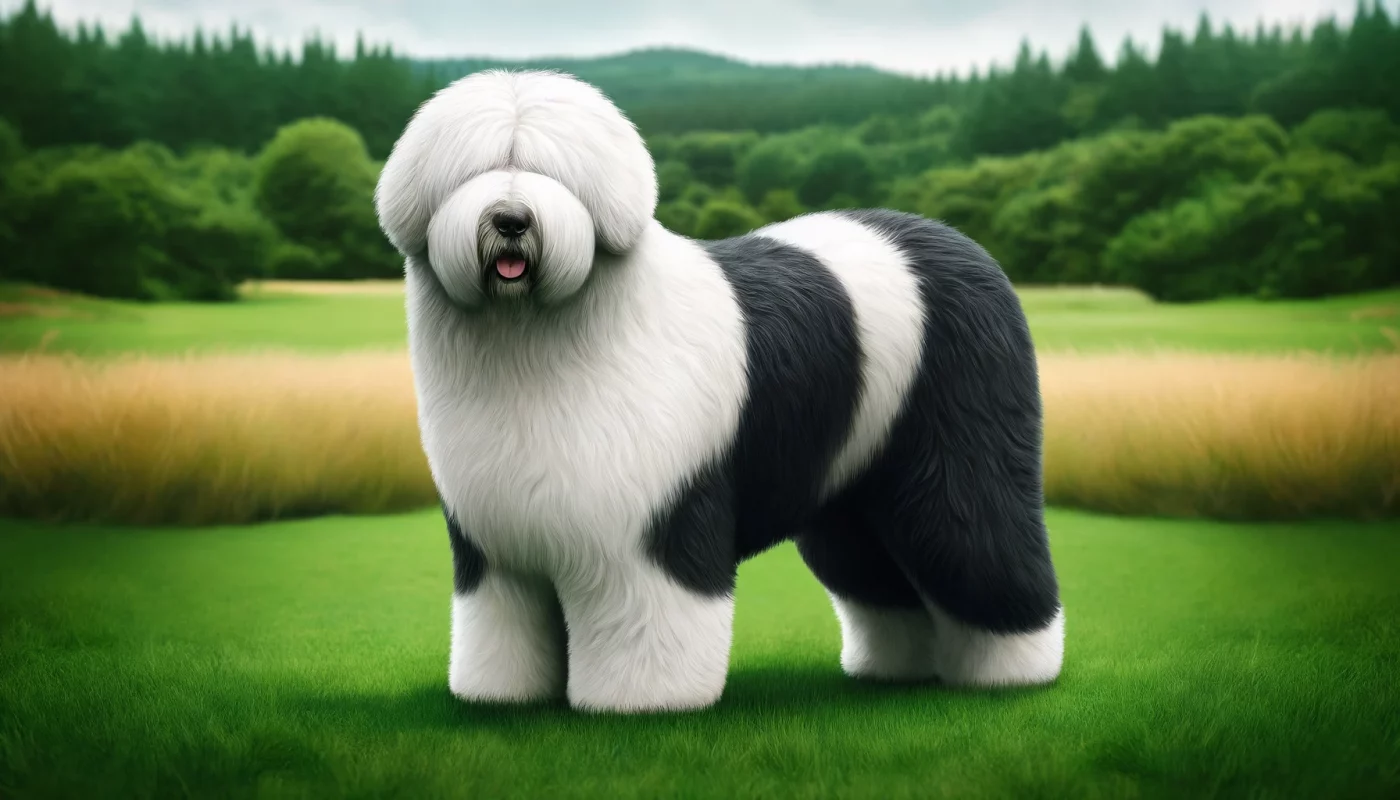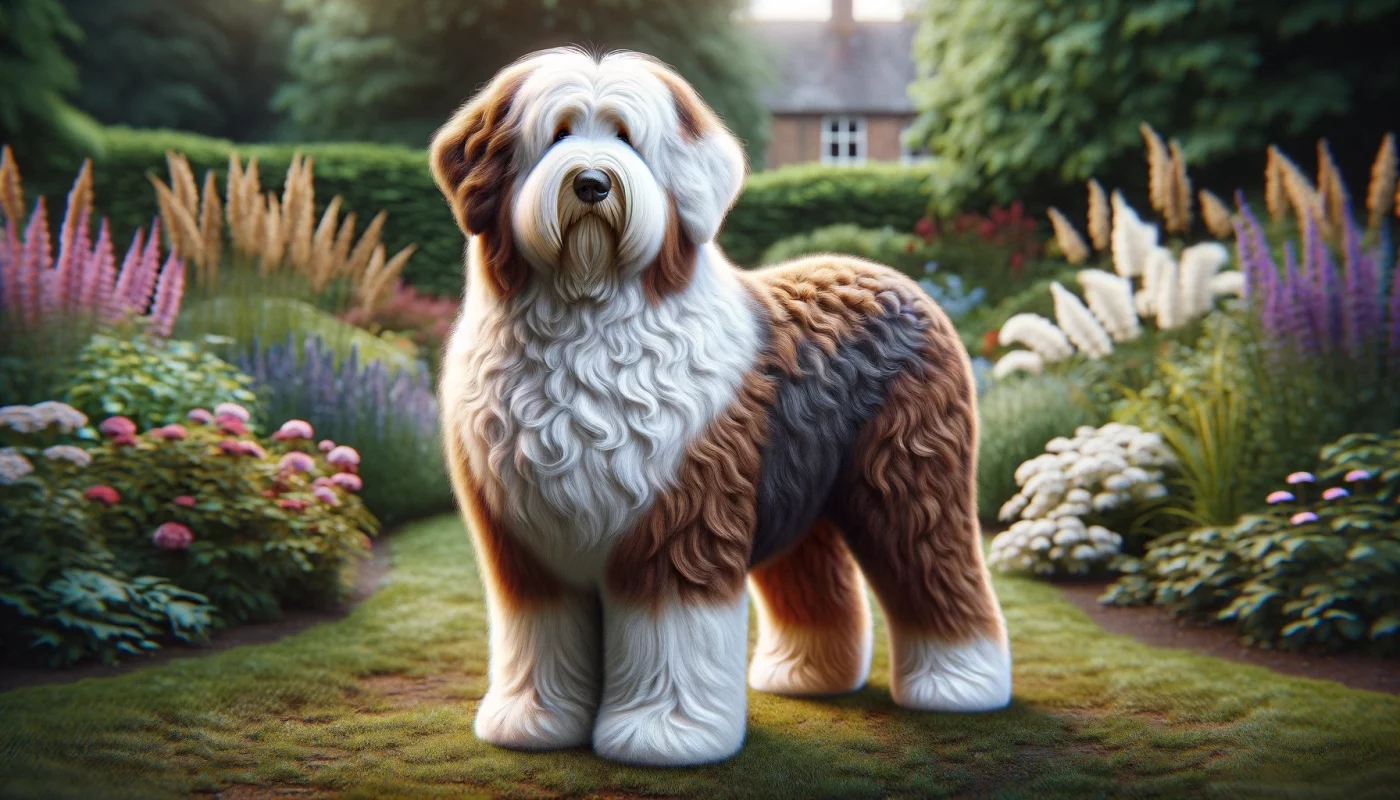The Old English Sheepdog is a large, charismatic breed known for its distinctive shaggy double coat and playful yet gentle demeanor. Originally bred for driving cattle and sheep, their coat not only served as protection from the harsh British weather but also added an extra layer of intrigue to their appearance. While traditionally pictured in a blue and white color, the Old English Sheepdog actually exhibits a variety of stunning coat colors that reflect their unique genetic heritage. This article explores seven eye-catching variations in the Old English Sheepdog’s coat, offering a deeper understanding of how each color contributes to the breed’s visual appeal and working capabilities.
1. Blue and White

The blue and white coat is the most iconic and recognized color combination for the Old English Sheepdog. The “blue” in their coat can range from a silver grey to a dark slate, often mingled with white in a patchwork pattern. This traditional coloration is not just beautiful but also practical, as it provided camouflage in foggy, damp environments typically found in rural England. The coat is dense and has a textured appearance due to the breed’s thick undercoat and softer outer coat, making them instantly recognizable and highly photogenic.
2. Grizzle and White

Grizzle and white Old English Sheepdogs display a unique blend of grey, blue, and brown shades, giving them a somewhat mottled appearance. This color variation is particularly striking because the grizzle pattern seems to enhance the fluffy and rugged texture of their coat. Each strand of hair can have different colors along its length, contributing to a dynamic and vibrant look. This variation is less common but equally captivating, highlighting the breed’s robust and cuddly appearance which is often a hit in the show ring.
3. Black and White

The black and white variation of the Old English Sheepdog is a bold and striking contrast to the more subdued blue and white. Black patches are typically solid and may appear over the body and face, often giving them a distinctive “panda bear” appearance. This color pattern is quite eye-catching and makes for a dramatic presentation in both urban and pastoral settings. The black fur is rich and lustrous, providing a beautiful backdrop for their expressive, dark eyes.
4. Sable and White

Sable and white Old English Sheepdogs are a rarity and possess a coat where the sable (brown and black) hairs blend with white, creating a warm, inviting appearance. The sable coloration can range from light golden to dark mahogany, which illuminates beautifully under sunlight. This color variety often brings out the fluffy texture of the coat, emphasizing their lovable and huggable qualities. Owners of sable and white Old English Sheepdogs frequently report that their pets are head-turners due to their unusual and stunning coat colors.
5. Grey and White

Grey and white Old English Sheepdogs exhibit a softer, more subdued color palette. This variation involves lighter shades of grey mixed with white, which can sometimes appear almost silver in the light. The lighter tones are particularly flattering in the fluffy, dense texture of their coat, giving these dogs a regal and elegant presence. The grey and white coat also tends to highlight the breed’s friendly and approachable expression, making them particularly popular among families.
6. Blue Merle

Blue merle Old English Sheepdogs are one of the most visually striking variations. This pattern features a marbling of black, grey, and white, with occasional patches of solid or piebald coloration. The merle pattern is caused by a genetic trait that affects the pigmentation of the coat, resulting in a beautifully irregular, speckled appearance. Because of the genetic nature of the merle coloring, it’s essential for breeders to adhere to responsible breeding practices to ensure health and vitality in the puppies.
7. Brown and White

Brown and white Old English Sheepdogs are another less common but equally beautiful color variation. The brown can vary from a light beige to a deep chocolate, mixed with white in various patterns. This warm color scheme enhances the soft, fluffy appearance of their coat, making them look even more cuddly and plush. Brown and white sheepdogs often have a soft, soulful expression complemented by their gentle and sweet nature.
Old English Sheepdogs are a delightful breed, not just for their friendly and loyal temperament but also for their varied and beautiful coat colors. From the traditional blue and white to the rarer sable and merle, these color variations add to the breed’s charm and appeal. Each color variation has its own unique beauty and characteristics, making the Old English Sheepdog not only a versatile companion and worker but also a wonderful subject for any dog lover’s camera. Whether displayed in a show ring or bounding through a family’s backyard, these dogs bring color, joy, and life wherever they go.
Frequently Asked Questions About Old English Sheepdog Colors
1. What is the most common color of Old English Sheepdogs?
The most common color of Old English Sheepdogs is blue and white. This traditional coloration typically features a mix of grayish-blue and white fur, with the blue ranging from a light, silvery tone to a deeper slate. The distinctive color pattern not only highlights the breed’s thick, shaggy coat but also relates back to their origins in England, where such a coat offered excellent camouflage in foggy, pastoral settings. The blue and white coloring is so prevalent that it has become synonymous with the breed, often being the first image that comes to mind when people think of Old English Sheepdogs.
2. Are there any health issues associated with certain colors in Old English Sheepdogs?
Some color patterns, particularly those involving the merle gene, can be linked to specific health issues in Old English Sheepdogs. The blue merle coloration, which is visually striking due to its mottled patches of blue and gray on a white background, can carry a risk of genetic health problems. These issues primarily involve hearing and vision impairments, including increased likelihood of deafness and ocular defects. This is due to the merle gene potentially affecting pigment production in both the coat and the sensory organs. Prospective owners should ensure that breeders conduct appropriate health screenings, especially when merle-colored puppies are involved.
3. Can Old English Sheepdogs be solid black?
It is extremely rare and non-standard for an Old English Sheepdog to be solid black. The breed standard typically includes dogs with significant white markings alongside darker fur. However, on very rare occasions, Old English Sheepdogs can appear to be almost solid black, especially in puppies or individuals where the darker patches are particularly large and expansive. Such occurrences are generally considered a deviation from the breed standard, and while they do not affect the dog’s eligibility for registration or health, they might not be preferred in show rings.
4. What does a sable Old English Sheepdog look like?
A sable Old English Sheepdog features a coat where each hair is multi-colored, typically showing bands of black and brown along its length, giving the overall appearance of a dark brown or light black color with a distinctive warm undertone. The sable pattern can vary significantly in intensity and coverage, with some dogs displaying a more pronounced brown color that stands out against the white areas of the coat. This coloring is less common than the traditional blue and white but is highly prized for its unique and striking appearance.
5. How do grooming requirements vary by color in Old English Sheepdogs?
Grooming requirements for Old English Sheepdogs are generally consistent across different colors, focusing on managing their thick, dense coats. Regular brushing and combing are essential to prevent matting and to keep the coat clean and tangle-free. The breed’s long fur can trap dirt and debris, particularly in lighter-colored coats, where stains are more visible. Therefore, bathing should be done as needed but not so frequently as to strip the coat of its natural oils. Dogs with lighter colors might require more frequent baths to maintain a clean appearance, especially around the face and paws.
6. Can Old English Sheepdogs have blue eyes?
Blue eyes in Old English Sheepdogs are possible but uncommon. They are most frequently seen in dogs with merle patterning, where the gene that causes the merle coloration can also impact eye color. Blue eyes in non-merle dogs are rare and can be striking, but they do not indicate any specific health issues or disadvantages. However, in the show ring, darker eyes are generally preferred as they adhere more closely to the breed standard, which favors an expression that reflects the breed’s amiable nature.
7. What is the rarest color found in Old English Sheepdogs?
One of the rarest colors in Old English Sheepdogs is the brown and white variation. This color is not typically seen in the breed and can range from a light tan to a deep chocolate shade, paired with white. Because this color is so unusual, brown and white Old English Sheepdogs can be quite striking and are often memorable. However, due to their rarity, finding a brown and white Old English Sheepdog can be more challenging, and they may attract attention both in public and in competitive show environments.
8. Are there any colors that disqualify Old English Sheepdogs from shows?
According to the breed standards set by major kennel clubs like the AKC, there are no specific colors that disqualify Old English Sheepdogs from participation in conformation shows. However, certain colors, such as all black or all white, are extremely rare and may not be seen as desirable by judges who are looking for the typical blue and white pattern. The standard emphasizes the importance of color and markings only to the extent that they enhance the dog’s appearance and do not detract from a typical Old English Sheepdog look.
9. How does coat color affect an Old English Sheepdog’s workability?
Coat color in Old English Sheepdogs does not inherently affect their ability to perform the tasks for which they were bred, such as herding and general farm work. The breed’s effectiveness in working roles is more influenced by their training, temperament, and physical condition than by the color of their coat. However, historically, the lighter parts of their coat helped make them more visible in fields, which could be beneficial for shepherds keeping track of their dogs in poor visibility conditions.
10. Can Old English Sheepdogs be gray and white?
Yes, Old English Sheepdogs can certainly be gray and white. This color variation typically involves shades of gray mixed with white, which may appear silver or steel-like. The gray and white coat can give the dog a dignified and soft appearance, which is both appealing and reflective of the breed’s gentle nature. This color combination is quite common and is well accepted within the breed standards, often favored for its classic look that embodies the traditional Old English Sheepdog appearance.
 Toledo, United States.
Toledo, United States.
